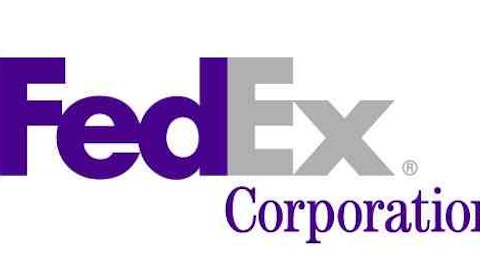I was reminded recently how dominant Alcoa Inc (NYSE:AA) still is. Working in Alcoa’s favor is its excellent management team, which has done a superb job making the best out of a difficult situation. But the company is at the mercy of aluminum prices. And unless aluminum prices start picking up, investors will be at the mercy of a sluggish industry.
Value play or value trap?

Let China decide
In the company’s fourth-quarter earnings report, management guided for a 7% growth in aluminum demand for 2013. While this was a 1% increase above 2012 guidance, China is expected to account for roughly 50% of that growth. The company is betting big in that area, and I think it’s a good bet. Besides, if Q4 earnings were an indication, then Alcoa Inc (NYSE:AA) can offset sluggish U.S. performances, which contribute to an 8% decline in revenue.
Soft production shipments had a considerable impact, and the mediocre prices of aluminum didn’t help. Nonetheless, the company still managed to beat Street estimates. Likewise, profitability improved significantly, and more than anything else, this is why the company’s management stands out. Net income arrived at $242 million, or $0.21 per share — exceeding the net loss of $191 million, or $0.18 per share in the year-ago period.
And the Street was pleased with margin performance. Gross margin advanced 4% and the company posted a 200% surge in operating income, helped by the sale of the Tapoco Hydroelectric Project facility, which generated a gain of $161 million after taxes. Nonetheless, net income still arrived at $64 million, when excluding items — enough to top Street estimates, and including examples of compelling cost cutting, to the extent of 12%.
Management said that this was due to fewer restructuring expenses. In that regard, Chairman and CEO Klaus Kleinfeld offered that “Alcoa hit record profitability in our mid and downstream businesses, and continued to drive efficiency in our upstream businesses in the fourth quarter, all while cutting debt and maintaining our cash position. We overcame volatile metal prices and global economic instability to deliver on our targets for the fourth year in a row. We enter 2013 in a strong position to maximize profitable growth.”
It’s the business, stupid!
To paraphrase Warren Buffett, when a management team with a reputation for brilliance tackles a business with a reputation for poor economics, it is the reputation of the business that stays intact. The point is, clearly Alcoa’s management is sound. They have taken measures to improve margins, which include removing upstream costs and adjusting for a better mix with midstream and downstream businesses.
These moves demonstrate management’s strong understanding of the pulse of the company. But is it enough? As Buffett has said, the economics of this business is poor. In the long term, Alcoa should do well, but aluminum prices, which are still below normal levels, have to pick up. The good news, though, is that these prices should help the company reach or even beat expectations in the coming quarters, including its own outlook. This should position the company with increased confidence when the industry fully recovers as experts projects.
Win-win situations for investors
In the meantime, investors should be excited about continuing developments in China, as well as inroads in the aerospace and transportation sectors. The Boeing Company (NYSE:BA) continues to migrate its fleet of jets to aluminum, which should help spur more demand. Tony Morales, Alcoa’s marketing director, suggests that an “aluminum-intensive” narrow-body jet made of new alloys would be up to 10% lighter than a composite-intensive plane and would cost 30% less to build and repair.
For Boeing, the cost savings can be significant, which in turn should help improve margins. And Boeing can certainly use better PR help these days considering the numerous groundings it’s had to suffer with regard to safety. But in the meantime, Alcoa’s investors should not ignore an opportunity to buy at significantly discounted rates — the company’s management is too good and aluminum will always be in demand.
The article Alcoa Still Looks Better Than Its Industry originally appeared on Fool.com and is written by Richard Saintvilus.
Fool contributor Richard Saintvilus has no position in any stocks mentioned. The Motley Fool has no position in any of the stocks mentioned.
Copyright © 1995 – 2013 The Motley Fool, LLC. All rights reserved. The Motley Fool has a disclosure policy.





